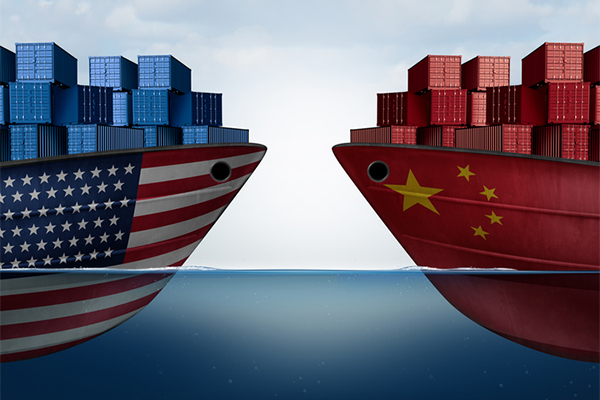Imported consumer goods should arrive in the country at least six weeks earlier than normal to make it onto shelves in time for Black Friday, according to IHS Markit.
Due to the continuing delays at U.S. ports consumer goods from Asia will need to have cleared our ocean cargo gateways by now, compared to a usual early November cut-off date, or risk not making it into shopping baskets this Christmas.
The warning comes as 1.59 million twenty-foot equivalent units (TEUs) imports into the U.S. arrived in September from Asia, up 13.8 percent from pre-COVID September 2019, according to PIERS by IHS Markit. The elevated imports levels from Asia send a clear message that the port-related congestion problems are like to continue into 2022.
High import volumes contributed to the port congestion, including taking longer to move containers off the pier and being unloaded at distribution centers, removing significant capacity from the system over the last few months.
Many retailers prioritised their holiday season shipping needs to get goods in early. The latest US containerized import data shows signs of a slowdown, indicating the ‘rush’ to get goods into the U.S. might be starting to slow, according to data from PIERS by IHS Markit.
This comes as the latest Port Performance Data by IHS Markit shows that the time vessels spend in key US West Coast ports waiting and unloading cargo deteriorated significantly in August 2021 to 348 hours for Los Angeles (vs 255 hours in July 20219) and 268 hours for Long Beach (vs. 190 hours in July 2021). These numbers are around triple what they would have been before the pandemic in August 2019.
While demand for imports might been slowing from the initial post-pandemic bounce, the global supply chain is also feeling the impact by the recent Covid outbreaks in China and Vietnam as well as power outages in China leading to more delays in shipments.
“What’s happening in the container shipping market is not entirely a demand-driven phenomenon anymore. Months of COVID-19–induced stress has led to the container supply chain being broken, while the distress continues to be accentuated by congestion, landside restrictions, and lack of equipment,” says Rahul Kapoor, Vice President Maritime and Trade at IHS Markit
The slowdown in imports could be short lived as retailers need to re-stock their warehouses after the holiday sales.”
Spokesmen add that despite some short-term let-up, supply chain managers see the global container and import bottle necks continuing well into the next year:
Shipping costs remain elevated and with so much dislocation of containers and port delays, importers and retailers will need to get used to things taking longer and being more expensive to reach the shops.”
Ian Gardner, CEO of last-mile solution GoFor, told SCMR that the implications of this blockage as consumer expectations for faster and reliable delivery are complex.
“The e-commerce boom and pandemic has forever changed our expectations for fast, responsive delivery. In a world where Amazon can deliver items within a few hours, other companies must modernize their delivery strategy and solutions to compete,” he says. “I expect that brands and retailers across the United States will start searching for faster, more cost-effective, tech savvy delivery partners that are also committed to delivering a lower carbon footprint.”
-
SC
MR


Latest Supply Chain News
- Early bird pricing expires soon for NextGen Supply Chain Conference registration
- A $125M Portland project seeks to revitalize a historic community, U.S. manufacturing
- Innovations in last-mile delivery and their strategic impact
- Embrace resistance for greater success with change management
- 6 Questions With … Steve Johanson
- More News
Latest Resources

 Explore
Explore
Business Management News
- Early bird pricing expires soon for NextGen Supply Chain Conference registration
- A $125M Portland project seeks to revitalize a historic community, U.S. manufacturing
- Innovations in last-mile delivery and their strategic impact
- Embrace resistance for greater success with change management
- Canada Industrial Relations Board orders binding arbitration, halting potential rail strike
- Delivery costs continue to drive shopper preferences
- More Business Management
Latest Business Management Resources

Subscribe

Supply Chain Management Review delivers the best industry content.

Editors’ Picks





